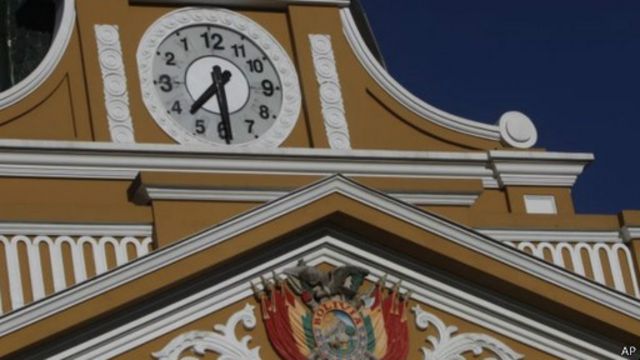
Why does the clock on the Bolivian Congress building run backwards?
Share
Yes, in Bolivia there is actually a government building with a clock that runs backwards – and that is not a mistake, but a politically and culturally desired one.
The backward clock at the Bolivian Congress building
Location:
-
La Paz, Bolivia
-
Building: Plaza Murillo, seat of the Bolivian National Congress (now Plurinational Assembly)
Installation:
-
In July 2014, the government of Evo Morales “turned” the clock above the Congress building:
-
The hands run counterclockwise
-
The numbers are also mirrored (1–12 run “backwards”)
-
Why does the clock run backwards?
Political & symbolic message:
-
“Southern perspective” instead of Eurocentrism:
-
In the southern hemisphere, the shadow of the sundial moves counterclockwise
-
The government wanted to show: “We think from our perspective – not according to northern standards.”
-
-
Return to indigenous values:
-
In many indigenous cultures of Latin America, time is considered cyclical, not linear
-
The watch is intended to stimulate critical thinking and question Western norms
-
-
“Clock of the South” – symbol of cultural change:
-
The clock is called “Reloj del Sur” (“Clock of the South”)
-
It is intended to reflect the identity of Bolivia and its indigenous majority
-
Quote from Foreign Minister David Choquehuanca (2014):
"Why should we always go to the North? Why should we submit to what comes from the North? [...] We dare to think differently, to think backward."
Interesting:
-
Inside the building, the clocks continue to run clockwise
-
Tourists who see the clock often initially believe it is a mistake or a joke
Conclusion:
The backward-running clock on the Bolivian Parliament is a deliberately placed symbol for:
-
cultural self-determination
-
Criticism of the Western linear understanding of time
-
Return to indigenous worldview
-
the desire to "think differently"
It is an example of how the representation of time becomes a political statement

